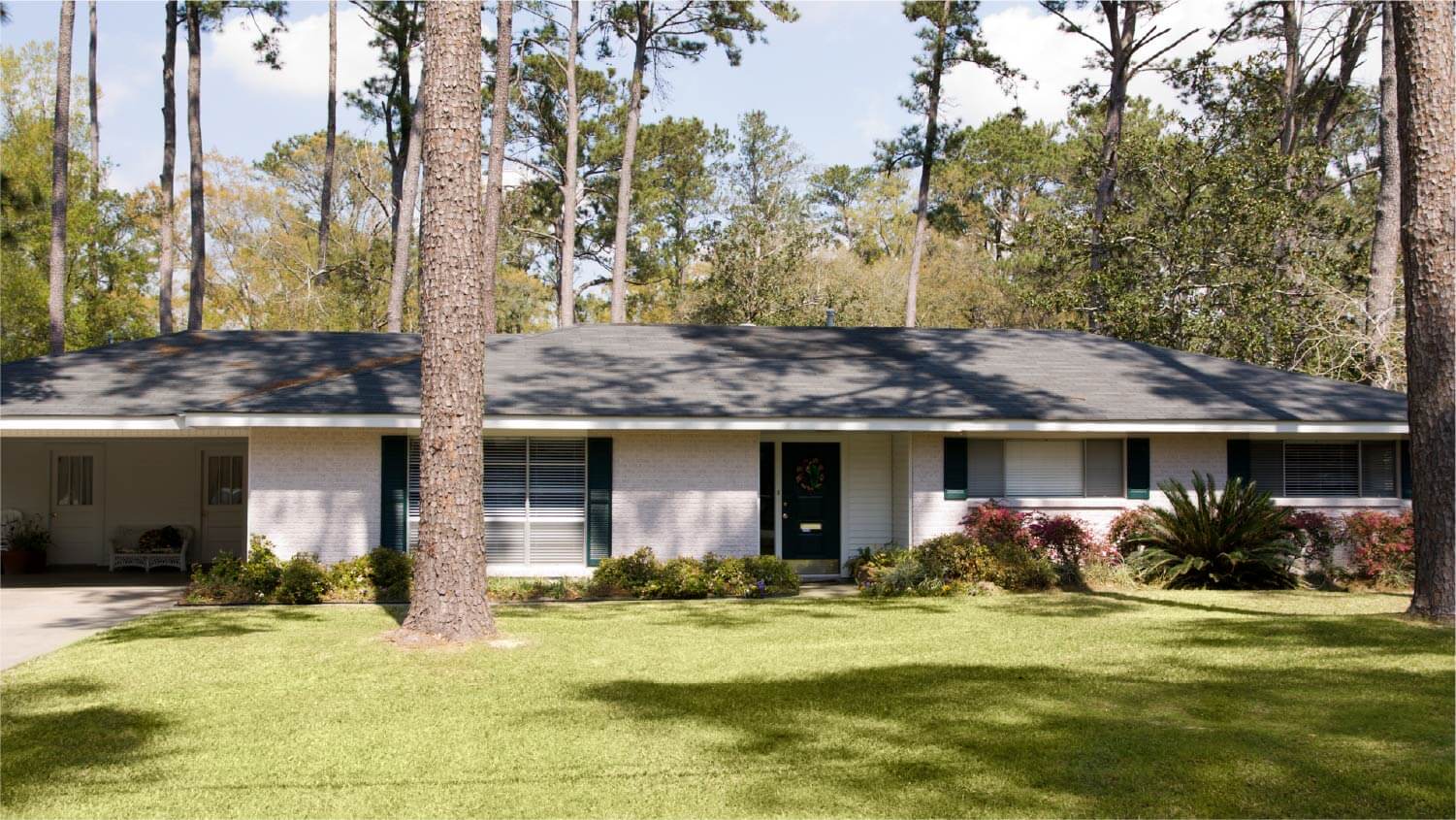
Few things elevate your outdoor space like a landscape architect can. Learn about how much a landscape architect costs and what affects your total.
The average cost to buy or build a beach house ranges from $188,000 to $502,000, with most homeowners spending an average of $337,000. Main cost factors include location, size, materials, and ongoing maintenance.


How much it costs to build a beach house varies widely by location and property type.
Key factors include land, construction, materials, and insurance.
The average cost per square foot for building a beach house is $220 to $580.
Demolition, site prep, and permits add to your total costs.
Labor accounts for 40% of your total cost of building a beach house.
This article was created using automation technology and thoroughly fact-checked and edited by an Angi Editor in accordance with our AI policy.
How much does a beach house cost? The average price to buy or build a beach house is $337,000, with an average range from $188,000 to $502,000. Expect to pay $220 to $580 per square foot, depending on location, size, and features.
A beach house is a major investment that brings unique rewards and responsibilities. This guide will walk you through what drives costs, how to budget, and what to consider before making your coastal dream a reality.
Understanding how much a beach house costs starts with breaking down the major expenses. The biggest components include the price of land, construction or purchase, materials, labor, permits, and ongoing costs like maintenance and insurance. Upfront costs cover buying land or an existing home, or building new, while recurring expenses include property taxes, insurance, utilities, and regular maintenance.
Buying an existing beach house often means a higher price per square foot, but building new allows for customization and possibly lower ongoing repair costs. A primary residence, vacation home, or investment property each come with different tax implications and cost structures. Single-family homes are more expensive than condos or townhouses, but each type has its own maintenance and insurance needs.
How much it costs to build a beach house depends on a variety of factors. Here’s a closer look at how your total breaks down.
The size of your beach house plays a major role in the overall cost. Larger homes require more materials and labor, and they often cost more to maintain and insure. Beach house construction ranges from $220 to $580 per square foot, depending on location, design, and quality.
A small beach cottage at 1,000 square feet might fall at the lower end of the price range, while a spacious 3,000-square-foot luxury home will be at the higher end. More bedrooms, bathrooms, and stories add to costs, both upfront and over time.
| Size (Sq. Ft.) | Description | Average Cost |
|---|---|---|
| 1,000 | Small cottage, 2 beds, 1 bath | $220,000–$580,000 |
| 2,000 | Average family home, 3 beds | $440,000–$1,160,000 |
| 3,000+ | Large/luxury, 4+ beds, extras | $660,000–$1,740,000 |
Where your beach house is located has a significant impact on price. Desirable beachfront property in popular areas costs more than homes set farther from the water or in less competitive markets. Real estate trends, local taxes, and proximity to amenities also shape costs.
East Coast properties, especially in places like the Hamptons or Miami, command high premiums. West Coast homes, such as those in Malibu, are also expensive. Gulf Coast and Great Lakes regions offer more affordable options, though prices are rising as demand grows. Beachfront locations always cost more than homes with a water view or those set farther inland.
If you are building new, demolition or site prep may be needed. Clearing land, removing old structures, and grading for flood safety can cost $1,500 to $22,000 or more. Coastal sites often have unique challenges like unstable soil, protected dunes, or erosion, which can drive up prep costs and require expert oversight.
Building or remodeling a beach house requires several permits, including building, zoning, environmental, and coastal commission approvals. Contractors often handle this process, but homeowners are ultimately responsible for compliance.
Permit costs vary by location and project size, ranging from $150 to $2,000. Securing coastal permits may take several months due to environmental reviews and public hearings.
Many professionals play a role in buying or building a beach house, with labor making up an average of 40% of your project total. Their expertise ensures your project meets local codes, withstands coastal weather, and achieves your design goals. Costs for these pros can vary by region and project complexity.
Hiring a general contractor costs 10% to 20% of the total project cost for coastal construction. Contractors oversee site preparation, manage construction crews, and coordinate inspections. Coastal expertise often comes at a premium, since building near the ocean requires specialized knowledge of weatherproofing and structural reinforcement.
Architects charge between 5% and 20% of the total project cost, or a flat fee for standard plans. Custom beach house designs, especially those focused on hurricane resistance and maximizing ocean views, tend to cost more. An experienced coastal architect ensures your home meets strict building codes and can withstand harsh weather.
A real estate agent earns a commission of 5% to 6% of the sale price. They help you find the right property, negotiate terms, and handle closing paperwork. Agents familiar with coastal markets can identify flood risks, erosion concerns, and local regulations, which helps you avoid costly surprises.
Beyond the main team, several other experts are often needed for a beach house project. Average costs for their services include:
Structural engineer: $2,000 to $8,500 for foundation and storm resistance evaluations.
Interior designer: $50 to $500 per hour for furnishing and finish selections.
Landscape architect: $70 to $250 per hour for erosion control and coastal-appropriate landscaping.
Home inspector: Included for pre-purchase or move-in inspection.
Insurance agent: Often included in policy costs, but specialized coastal insurance advice is invaluable.
Some homeowners consider DIY for small renovations or repairs to save on labor. While you can cut costs by handling painting, minor repairs, or even some interior updates, coastal construction is complex and carries higher risks. For example, building a deck yourself might save $4,000 to $12,000, but mistakes can lead to safety hazards, failed inspections, or costly fixes.
DIY projects require specialized tools, significant time, and a solid understanding of local codes. Hiring a pro ensures compliance and long-term durability, especially in harsh coastal conditions. For most structural work or major remodels, we recommend working with experienced professionals.
Remodeling a beach house involves changing the layout, structure, or major systems, while renovating means updating finishes or restoring existing features. Remodeling is more expensive, with costs starting at $70,000 and up, depending on the scope. Renovations like painting, flooring, or replacing fixtures vary in cost, but are significantly less expensive than remodeling or building a new structure
Standard renovation projects include repainting, new flooring, and updated lighting, which refresh the space without major construction. Remodeling projects might involve adding bedrooms, expanding living areas, or upgrading the foundation to withstand storms. Your choice depends on the home’s age, condition, your goals, and your budget. Remodeling takes longer, often requires more permits, and can have a bigger impact on resale value.
Consider these cost-saving strategies to make your beach house project more budget-friendly:
Shop for land or properties in emerging coastal areas.
Get quotes from at least three local architects to ensure competitive pricing.
Choose durable, low-maintenance materials suited for coastal climates.
Limit custom features and prioritize essential upgrades.
Schedule construction or renovations during off-peak seasons.
Bundle projects to save on labor and materials.
Invest in energy-efficient systems to reduce long-term costs.
Compare insurance providers for the best coastal property rates.
Consider modular or prefabricated construction for cost savings.
Maintain the property regularly to avoid costly repairs.
Owning or improving a beach house can boost your property value, especially in sought-after areas. Renovations and smart upgrades may offer a return on investment (ROI) of 40% to 90%, with higher returns for homes with strong rental potential. Compared to other home improvements, beach houses often see larger gains due to location and demand.
Location, rental income, market trends, and property condition all impact ROI. Beyond financial benefits, a beach house offers a unique lifestyle, vacation flexibility, and long-term appreciation. However, it is important to weigh risks like market volatility, climate change, and higher insurance costs before making your decision.
Home is the most important place on earth, which is why Angi has helped more than 150 million homeowners transform their houses into homes they adore. To help homeowners with their next project, Angi provides readers with the most accurate cost data and upholds strict editorial standards. We extensively research project costs to develop the pricing data you see, so you can make the best decisions for you and your home. We rely on reputable sources, including the U.S. Bureau of Labor Statistics, academic journals, market studies, and interviews with industry experts—all to ensure our prices reflect real-world projects.
Want to help us improve our cost data? Send us a recent project quote to [email protected]. Quotes and personal information will not be shared publicly.
From average costs to expert advice, get all the answers you need to get your job done.

Few things elevate your outdoor space like a landscape architect can. Learn about how much a landscape architect costs and what affects your total.

Wondering how much hiring an architect cost? Discover architect prices, cost factors, and money-saving tips to help you plan your home project with confidence.

Get transparent draftsperson cost to hire info, including average prices, cost factors, and tips to help homeowners budget and save on drafting services.

Find out how to hire a land surveyor from the prep stages all the way to signing the contract. Knowing what to look for will help you save time and money.

Learn about Renaissance-style architecture, including what defines the form and how to incorporate the crucial elements of style and design into your home.

Discover the cost to build a ranch home, including average prices, key cost factors, and tips to help you plan your budget and maximize value.